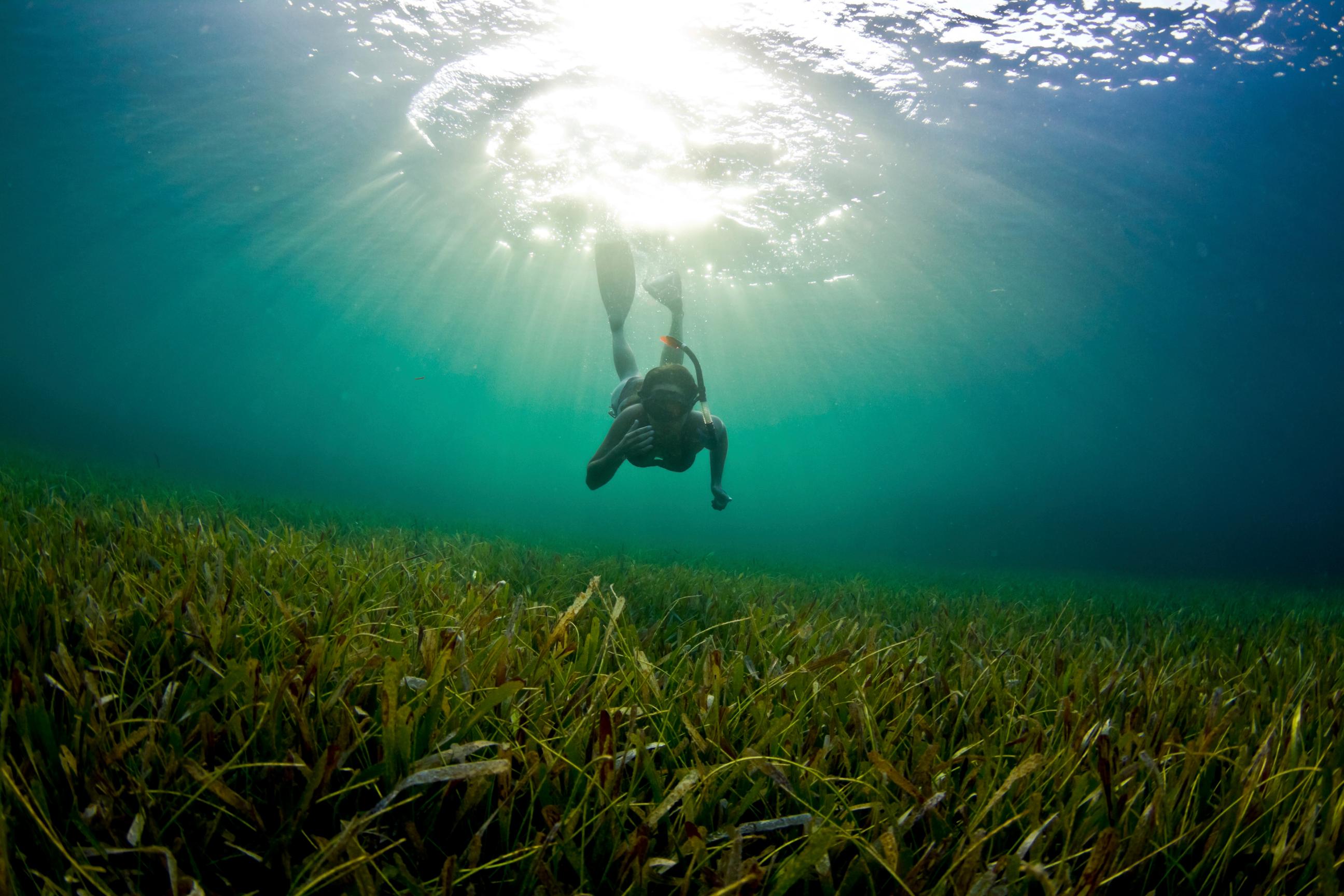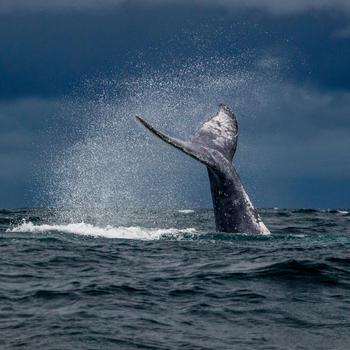Editor’s note: From “climate adaptation” to “ecosystem services,” environmental jargon is everywhere these days. Conservation International’s blog looks to make sense of it in an occasional explainer series we’re calling “What on Earth?”
In this installment and video, we break down “blue carbon,” a term you may not have heard of but which has immense importance for curbing climate change.
What is ‘blue carbon’?
“Blue carbon” is the carbon that is stored naturally by marine and coastal ecosystems, hence the name. Three types of coastal ecosystems — mangroves, seagrasses and tidal marshes — store half the “blue” carbon buried beneath the ocean floor.
What’s so important about blue carbon?
It’s important because the release of carbon into the atmosphere is a major driver of climate change, and because blue carbon ecosystems hold a LOT of carbon — in a single square mile, mangroves hold as much carbon as the annual emissions of 90,000 cars.
That’s a lot. How is that even possible?
Let’s bring in an expert to explain.
“Unlike terrestrial ecosystems, carbon stored in coastal soil can remain trapped for long periods of time,” says Emily Pidgeon, senior director of strategic marine initiatives at Conservation International. “In these places, low-oxygen conditions in the soil below the water can lock in carbon for centuries to millennia.”
So cutting down mangroves, for example, is bad for the climate?
Indeed — these types of trees are exceptional at absorbing carbon from the atmosphere and storing it in their extensive root systems and their soil. Once you kill those trees, or if you disturb the ground below them, their carbon is slowly released back into the atmosphere. In most cases, people who live on coasts are the ones who will suffer the effects the most.
Why is that?
Because of sea-level rise and increased storms caused by climate change. Mangroves and other coastal ecosystems act as natural buffers of waves, flooding and storm surges. If the sea continues to rise, storm surges will get higher, and if a coastal village cuts down its mangrove forests, it is nearly defenseless against the sea: In a study of developing countries subject to storms, mangroves are estimated to reduce the coastal areas impacted by storm surge by up to 50 percent.
Interesting — but what else is so special about these ecosystems?
They’re not just about carbon and coastal defense, Pidgeon says.
“Let’s not forget about biodiversity — blue carbon ecosystems are critical habitat for marine species that make up a major part of people’s food security and incomes, and they improve and maintain water quality along coastlines for coastal countries worldwide,” she says.
So how much of these blue carbon ecosystems have we lost?
A lot, and the numbers are not pretty: Globally, we’ve lost up to half the world’s mangroves since the 1940s. A quarter of the world’s tidal marshes have been lost since the 1800s. And the world has lost half its seagrasses just since 1990.
That’s bad. So why are these areas being lost?
A major reason is for shrimp and fish ponds and other coastal development; dams, firewood harvesting, pollution and dam-building are also contributing factors.
“In some places like the Philippines, over half of the countries’ mangroves have been converted to shrimp ponds,” Pidgeon notes. “As coastal communities in these countries are now discovering, this has left them highly exposed to typhoons that impact the country every year.”
How exposed are we talking about?
Take the case of Typhoon Haiyan.
In 2013, Haiyan devastated large areas in the Visayas region of the central Philippines; waves up to 6 meters (20 feet) high and floods several meters deep in coastal areas killed 6,300 people. While a number of factors contributed to the devastation, the degradation and loss of coastal ecosystems — particularly mangroves and coastal forests — left the coasts completely exposed and the region highly vulnerable. More than 80 percent of the mangrove forests along the coasts of the Visayas Islands had been cleared, mainly to install fish and shrimp ponds.
Wow. What if they simply replanted mangroves or seagrasses along the coasts?
Well, it’s being done in a few places, including the Philippines, but in some cases, it’s really difficult to re-establish the conditions that gave rise to these ecosystems — just planting some mangrove trees doesn’t mean they’ll thrive in an environment that has been completely altered. Restoring these ecosystems is possible, but it needs to be done right and can be expensive if the coastline has been changed significantly.
In any case, habitat restoration can’t fix things overnight. “Even after a mangrove, marsh or seagrass has been restored, it takes centuries to bring back the carbon that was released into the atmosphere when the ecosystem was destroyed,” Pidgeon says.
So what can be done, then?
Thanks to a growing amount of research into blue carbon over the past several years, decision-makers are waking up to the reality that these ecosystems are incredibly important both for preserving biodiversity and for protecting the climate. It’s important that blue carbon is factored into the emissions cuts that countries are promising to make under the Paris climate agreement, for example. Meanwhile, a number of blue carbon conservation initiatives have taken shape in recent years to help conserve and restore these ecosystems.
What kind of initiatives?
Partnerships among research organizations including Conservation International, governments and communities have formed in recent years, including the Blue Carbon Initiative, a collaboration to accelerate the conservation and restoration of mangroves, seagrasses and salt marshes through science, policy and coastal management.
More recently, the International Blue Carbon Partnership was initiated by the Australian government to support countries to protect their blue carbon ecosystems and reduce their greenhouse gas emissions through learning and knowledge-sharing about these ecosystems. Conservation International is a founding member of the partnership; Indonesia, the United States, Costa Rica, the United Arab Emirates, France and other countries and organizations have joined.
“Over the past five years, a strong partnership between conservationists, scientists and communities has driven rapid progress in what we know about blue carbon ecosystems and how important they are as coastal people around the globe face the impacts of climate change,” Pidgeon says. “The Blue Carbon Partnership — with its focus on connecting nations to this network — has the potential to reverse the loss of blue carbon ecosystems globally and make a major contribution in the climate change fight.”
Sounds like progress.
It’s a good start — given recent headlines about blue carbon ecosystems, we can’t afford to lose any more of these places.
Bruno Vander Velde is Conservation International’s editorial director.
Further reading



